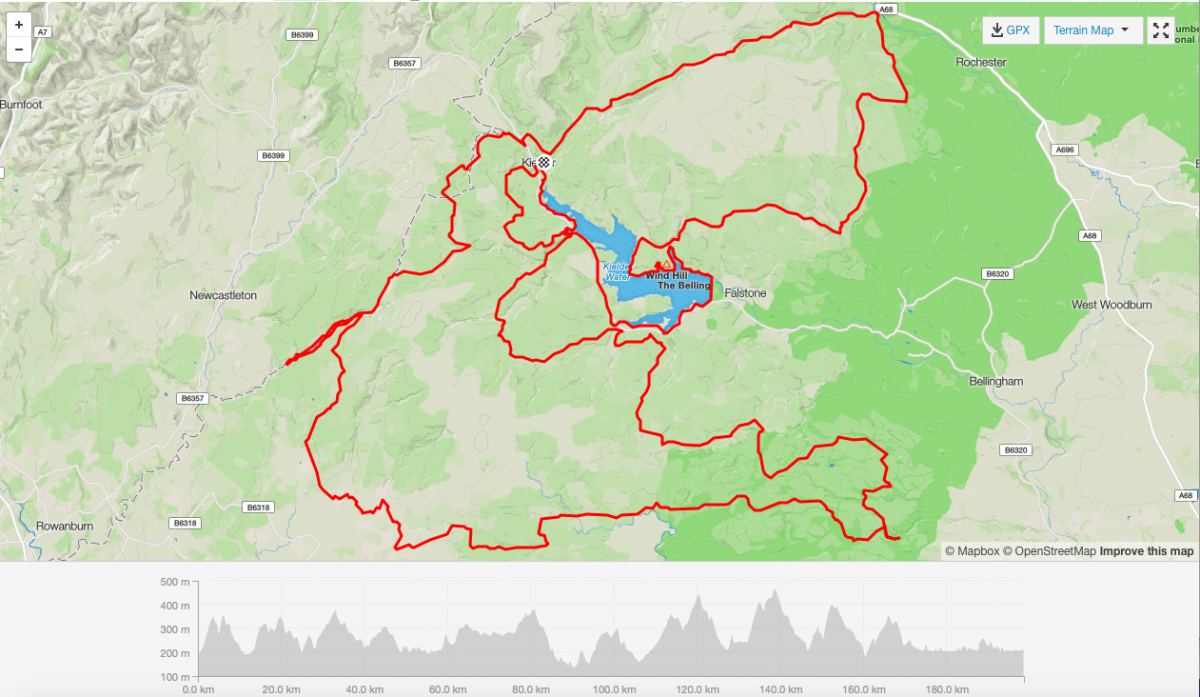Where we are going we don’t need roads, but we will have gravel…..
The second Dirty Reiver saw 800 riders gather at Kielder Castle to raid the forestry tracks and fire roads of Kielder Forest Park, Northumberland National Park and across the borders into Scotland, taking on up to 200 km of mainly off road riding and between 3100 and 3300 m of climbing for the full Reiver, with a shorter 130 km ‘Dirty Thirty’ route also available.
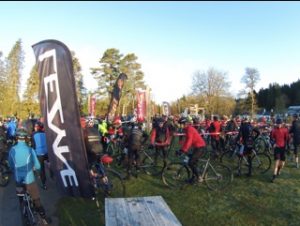
For a roadie and someone from the flatlands of Norfolk this would seem like a strange place to be found, but persuasion and a really good review from a friend found me at the sub-zero start line preparing to join the full route for possibly the toughest ride I’d ever attempted. A minute of silence was taken in memory of cycling great and friend of the Reiver, Mike Hall, and then with a reminder that in those periods where we were struggling we should #BeMoreMike we set off. From the start line a neutralised period to the first offroad section was ridden in groups of 20-30 riders prior to the offroad timing start, where the fun commenced with a tough 7-11% gravel climb, followed by a brief fast descent. The precedent for the day was set, this was going to be a tough and my legs agreed early on this ‘Gravel Grinder’ was going to see some grinding!
The format of The Dirty Reiver is taken from the Gravel Grinders made famous in the US, where vast distances of unpaved road have led to races such as the Dirty Kanza in the noughties and the inaugural Dirty Reiver was organised by Paul Errington in 2016. But riding this type of surface is nothing new, sections of unpaved road being found in the Belgium classics and elsewhere on the pro circuit. Where gravel grinding differs is in the equipment, specifically the tyres and set up. As we have seen in the classics of the last couple of years wider, larger volume tyres are key to reducing punctures and improving ride. Thus, as I lined up there was a mix of cyclocross, gravel, and mountain bikes with greater than 700 x 35c width tyres all the way up to fat MTB tyres some with tubes and some tubeless and all with pressures critical to success. The tyre set up proved critical as punctures were the main reason for riders stopping for repairs, with some riders having reported 4 punctures by the first feed station at 50 km.
Coming out of the first feed station one hazard was on my mind, the ford! It had been reported the week before as only being 6 inches deep, but I already knew the line through it was difficult, weather conditions had been variable and in the inaugural event, those that came off here never made it to the end of the course. Discretion being the better part of valour, and long Sealskinz socks worn, I dismounted and pushed the bike through. With only slightly cold feet I pushed on up the climb continuing to question my choice of bike, with this much climbing its weight had a definite disadvantage. Then, just before the second feed station, the trail took a turn that made me forget this questioning. A long, steep, more rocky than gravel descent which the front shocks where opened for the first time and I was able to use weight, MTB set up and a little downhill craziness to gain speed advantage over the gravel, adventure and cyclocross bikes. Like every descent ever ridden there was intense concentration and a feeling of euphoria!
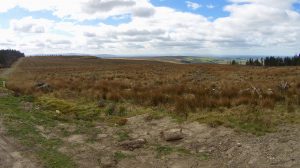
As the second half of the distance was entered the field had spread out significantly, by this point I was probably 2 hrs behind the leaders, but the goal now was to finish before the cut off, and the section between the second and third feed stations (94 km & 146 km respectively) was the toughest of the course. Starting with long grinding climbs and the poorest quality, roughest surfaces shaking bikes and riders followed by 800 m of elevation gain at 7-12% the fatigue and mechanical failures really set in. Fortunately trailside fixes were successful and I summoned my inner #BeMoreMike and continued up the climb to descend to the third (and best) feed station where freshly brewed coffee and potatoes were available.
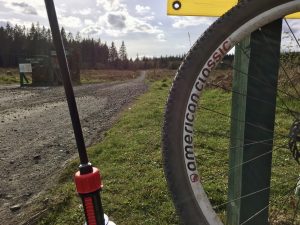
Suitably refreshed, refuelled and bottles refilled I set off again up yet another climb (what is it about feed stations and immediately following climbs?), 54 km to go and the finish would be mine. By the final safety check at 175 km I had made the cut and dropped to circle Kielder water; familiarity with this MTB trail (and some chocolate from the food pack) spurred me on to the line.
Thirteen hours and Twenty Minutes, over 5 hours behind the first rider I made it to the finish line at Kielder Castle, I was a Reiver, I had raided the borders and survived albeit slowly. The bike was intact with only a couple of easily repairable mechanicals to its name and not a single puncture. There was joy in the fatigue and the knowledge of the muscle pain that would come later.
Would I do it again? Yes!
Would I recommend it? Yes!
Did I pack too much on the bike? Probably not!
But what did I learn for next time? Firstly, tubeless is definitely the way to go, I went tubeless 20 days prior to this event and though I lost a little pressure in the rear tyre this didn’t impact the ride. Secondly, the bike isn’t important, the setup is in such a rough, dusty, endurance event minimising the moving parts that can be shaken, damaged or clogged up is a must, the weakness I had was with the front derailleur that caused climbing issues when it refused to drop into low range repeatedly on long climbs fortunately the high volume tyres with low pressures did help provide suspension. Thirdly, training! With the combination of repeated long hills and technical descents, endurance and technique are needed to get the best results. I was really glad of time working on cornering and even managed not to stack it when I lost the back wheel grip at 40 mph! Lastly? This was fun, even as the toughest event I have ever done I had fun nearly all the way round.
The Ride:
- Bike: Modified Kross B4 29er Aluminium MTB
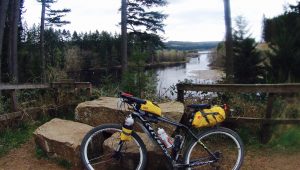
The Ride (thanks to Stefan at Richardsons for setting it up) - Bars: Jones H-Bar
- Seat: ISM PM 1.0
- Wheels: American Classic All Mountain Tubeless Ready
- Tyres: 2.1 in. Schwalbe Thunder Burt Snakeskin TL Easy Folding 29er Tyre
- Tubeless Sealant: Orange Seal
- Luggage: Alpkit Bike Luggage
For more information on:
The Dirty Reiver: https://www.dirtyreiver.co.uk
Kielder Forest Park: http://www.visitkielder.com
Northumberland National Park: http://www.northumberlandnationalpark.org.uk
General Gravel Cycling: http://www.gravelcyclist.com
What is a Reiver: https://en.wikipedia.org/wiki/Border_Reivers
The Route:
